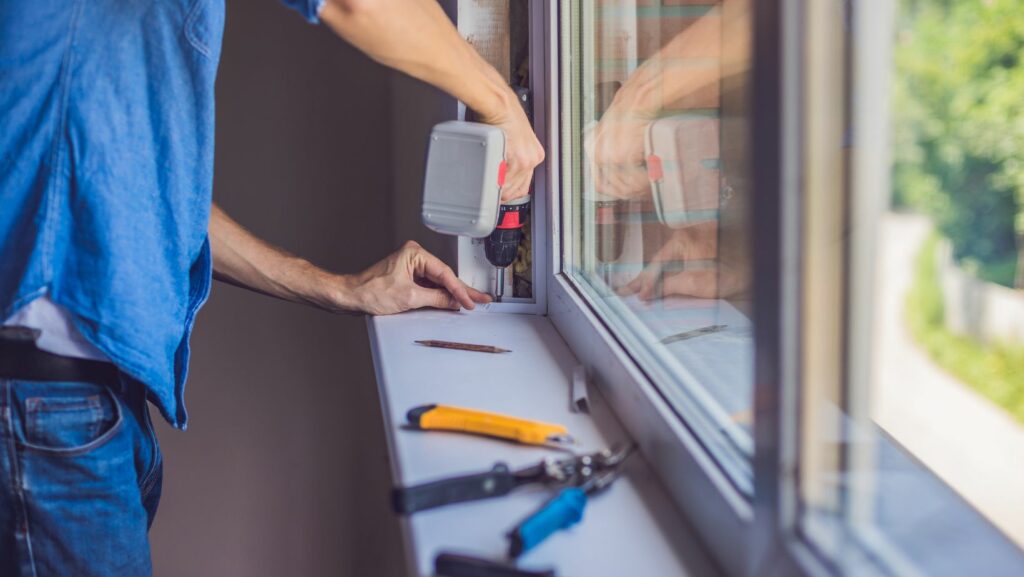Mastering Energy-Efficient Window Installation: A Comprehensive Guide

In today’s world, where environmental consciousness is on the rise, energy efficiency has become a paramount consideration in every aspect of construction. One crucial area where this is especially relevant is in window installation techniques. Not only do energy-efficient windows contribute significantly to reducing energy consumption, but they also enhance comfort and lower utility bills. We will explore the various aspects of energy-efficient window installation techniques, from selecting the right windows to ensuring proper installation for optimal performance and energy savings.
Selecting the Right Energy-Efficient Windows:
The first step in embarking on an energy-efficient window installation project is to select the right windows. Look for windows with low U-values and high R-values, indicating better insulation properties. Additionally, consider the window’s solar heat gain coefficient (SHGC), which measures how much solar radiation it allows into your home. Opt for windows with lower SHGC values in warmer climates to reduce cooling costs and higher SHGC values in colder climates to maximize passive solar heating.
Proper Measurement and Preparation:
Accurate measurement is crucial for a successful energy-efficient window installation. Measure the window openings carefully to ensure a perfect fit. Remove any existing window trim and inspect the surrounding areas for signs of moisture or damage. Repair any issues before proceeding with the installation to prevent future problems. Proper preparation sets the stage for a seamless installation process and ensures the longevity and performance of your new windows.
Sealing and Insulation Techniques:
Effective sealing and insulation techniques are vital for maximizing the energy efficiency of your windows. Use high-quality sealants and insulation materials to fill gaps and prevent air leakage around the window frames. Install weatherstripping along the edges of the windows and doors to create a tight seal and prevent drafts. Consider insulating window films or adding storm windows for an extra insulation layer, especially in older homes with single-pane windows.
Professional Installation vs. DIY:
While DIY window installation may seem cost-effective, professional installation offers several advantages, especially concerning energy efficiency. Experienced installers have the knowledge and tools to ensure proper sealing, insulation, and alignment, which are crucial for optimal energy performance.
Maximizing Natural Light and Ventilation:
Energy-efficient window installation involves more than insulation and sealing; it also involves maximizing natural light and ventilation. Choose window styles that allow ample natural light, such as casement or awning windows with low-E coatings, without compromising energy efficiency. Incorporate operable windows in strategic locations to facilitate cross-ventilation and reduce the need for mechanical cooling during mild weather conditions.
Maintenance and Upkeep:
Proper maintenance is essential for preserving the energy efficiency of your windows over time. Regularly inspect the windows for any signs of damage, such as cracked seals or condensation between panes, and address issues promptly. Clean the windows and frames regularly to remove dirt and debris hindering their performance. Consider applying a fresh coat of sealant or paint to protect the frames and maintain their energy-saving properties.
Choosing Sustainable Materials:
In addition to selecting energy-efficient windows, consider the sustainability of the materials used in their construction. Opt for windows made from eco-friendly materials such as recycled glass, responsibly sourced wood, or vinyl with low environmental impact. Look for certifications like ENERGY STAR® or LEED to ensure the windows meet stringent energy efficiency and sustainability standards.
Integration with Smart Home Technology:
Integrating energy-efficient windows with smart home technology can enhance their performance and energy-saving capabilities. Smart window sensors can monitor temperature, humidity, and sunlight levels, allowing automated control of blinds or shades to optimize natural light and reduce heating or cooling demands. Pairing energy-efficient windows with a smart thermostat enables precise climate control based on occupancy patterns and external weather conditions, maximizing comfort while minimizing energy usage.
Evaluating Return on Investment:
Before embarking on an energy-efficient window installation project, evaluating the return on investment (ROI) in terms of energy savings and increased home value is essential. Consider factors such as local climate, energy prices, available incentives or rebates for energy-efficient upgrades, and the expected lifespan of the windows. Calculate potential energy savings over time and compare them against the upfront installation costs to determine the payback period and overall ROI. Investing in energy-efficient windows pays off in reduced energy bills, adds value to your home, and contributes to a more sustainable future.
Mastering energy-efficient window installation requires attention to detail, proper planning, and the right techniques. By selecting the right windows, ensuring accurate measurement and preparation, employing effective sealing and insulation techniques, and considering professional installation when needed, you can enhance your home’s energy efficiency while enjoying improved comfort and lower energy bills. Remember to maximize natural light and ventilation, prioritize maintenance and upkeep, and stay informed about advancements in energy-efficient window technologies to optimize your home’s energy performance continually.

 7 Design Hacks to Create a Seamless Indoor-Outdoor Flow
7 Design Hacks to Create a Seamless Indoor-Outdoor Flow  How Often Should You Repaint Your Walls? A Room-by-Room Guide
How Often Should You Repaint Your Walls? A Room-by-Room Guide  Boost Productivity: The Plants to Elevate Your Home Office Space
Boost Productivity: The Plants to Elevate Your Home Office Space